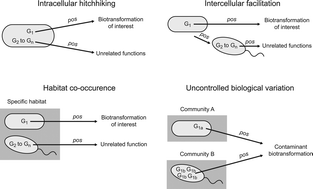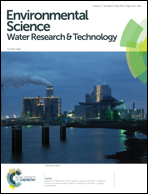Can meta-omics help to establish causality between contaminant biotransformations and genes or gene products?
Abstract
There is increasing interest in using meta-omics association studies to investigate contaminant biotransformations. The general strategy is to characterize the complete set of genes, transcripts, or enzymes from in situ environmental communities and use the abundances of particular genes, transcripts, or enzymes to establish associations with the communities' potential to biotransform one or more contaminants. The associations can then be used to generate hypotheses about the underlying biological causes of particular biotransformations. While meta-omics association studies are undoubtedly powerful, they have a tendency to generate large numbers of non-causal associations, making it potentially difficult to identify the genes, transcripts, or enzymes that cause or promote a particular biotransformation. In this perspective, we describe general scenarios that could lead to pervasive non-causal associations or conceal causal associations. We next explore our own published data for evidence of pervasive non-causal associations. Finally, we evaluate whether causal associations could be identified despite the discussed limitations. Analysis of our own published data suggests that, despite their limitations, meta-omics association studies might still be useful for improving our understanding and predicting the contaminant biotransformation capacities of microbial communities.


 Please wait while we load your content...
Please wait while we load your content...